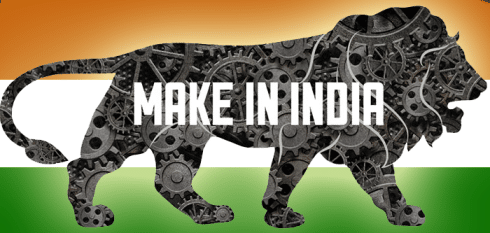Australia’s Migration Reset: Seven MEGA changes from July 2025
MAKE IN INDIA: A COMPLETE GUIDE

In May 2014, Narendra Modi became the Prime Minister of India in a historic mandate. A big part of his promise to the Indian people was that he will make the country a global manufacturing destination, thus maintaining the trajectory of high economic growth. Two years on, we take a look at how Make in India has done so far.
Ever since the election of Narendra Modi as the Prime Minister of India, the Make in India campaign has taken wing and become the buzzword of all industries that do business in and with India. In fact, Make in India was one of the main slogans on which Narendra Modi structured his election campaign in a bid to become Prime Minister.
This article is a complete guide to Make in India, the intention, the history and the future.
What is Make in India?
As the name itself suggests, the intention of the campaign is to make India the manufacturing hub of Asia in the beginning, and then the world. In a geopolitical sense, India pits itself in direct competition against China to become the world’s manufacturing plant. In a local sense, this will make India self-sufficient as a nation because manufacturing jobs and an increase in production skills will result in a huge economic boost for the country, thereby bettering the quality of life of people and also powering the future growth engine that will make India the next global superpower.
Key policies of Make in India
There are six main policies that make up the foundation structure on which Make in India is built. They are:
- Ease of business. The initiative focuses on inviting manufacturing companies the world over to set up plants in India and make their stuff inside the country, as opposed to making overseas and importing their goods. For this, a lot of the famed red tape and bureaucracy that has made India an undesirable place for setting up a business has to be made away with. Legislative changes are being undertaken to make India an easy place in which to set up a business.
- Job skills for youth. In association with a twin movement called Skill India, Make in India intends to equip young Indians with skills that are manufacturing and engineering based. Twenty five key industries have been earmarked for this programme, and training courses are being organised around the country to endow young people with skills. Some of these industries are highways, construction, defence, automobiles etc.
- Making India a manufacturing hub. The Prime Minister’s foreign policy is largely geared toward inviting big corporations in other countries to set up manufacturing plants in India. The ‘three Ds’ that India has over its competitors, according to the Prime Minister, are demand, democracy and demography. Now all it needs is infrastructure, technology and exposure.
- Easing bureaucracy. One of the biggest complaints about big corporations entering India is that the amount of red-tape that they must go through is simply not feasible for a trustworthy relationship. Big companies like Walmart have tried and failed to set up their operations in India. One of the biggest goals of the Make in India movement is to regulate FDI (Foreign Direct Investment) in various industries in a controlled manner, and couple that with easing of archaic laws that are holding back the country.
- Hundred Smart Cities. As part of the Make in India programme, the central government has made a list of hundred smart cities in which affordable housing schemes will be introduced, and investors will be invited to ‘adopt’ a city so that they can become a partner in the plan.
- Privatisation of PSU companies. India has a lot of wealth and untapped assets locked in with barely profitable, highly inefficient Public Sector Undertaking companies (called PSU) which are still under the control of the central government. The Prime Minister has made it clear that if funds are necessary to make Make in India a reality, partial or full disinvestment of certain PSU companies might be necessary, which will also have the positive effect of the business being turned over to the private sector where it will learn to sink or swim in line with market forces.
Targets of Make in India
The Make in India programme has been launched with a full plan with complete goals and timelines. While nobody can tell at the moment whether or not these plans will come to fruition, this may be the first time in Indian politics where a ruling party has released a complete blueprint with measurable goals. Here are some of them.
- Twenty-four manufacturing cities will be developed in India in three phases. In Phase 1 of this transformation, which ends by 2019, seven cities will be converted into ‘manufacturing hubs’.
- The share of manufacturing in India’s total economy is currently at 15%. The target is to increase this to 25% within a fifteen year period, by which time all 24 manufacturing cities will be running on full steam.
- 25 growth sectors have been identified, including IT, automobile, pharmaceuticals, infrastructure and renewable energy.
- A 10% capital subsidy will be provided for production of equipment for controlling pollution, reducing energy consumption, and for contributing to water conservation.
An overview of policy changes
A whole slew of policy changes are inevitable in order to ensure that Make in India is realised as imagined Narendra Modi. A few of them are listed below:
- Flexibility of working hours will be provided to everyone working in India to align with global standards. Labour laws are being amended to make India a desirable destination not just for manufacturers but also for employees.
- The portal, makeinindia.com, has been created for companies and entrepreneurs to seek policy clarification and receive answers within a maximum of 72 hours.
- All government departments and ministries will be integrated into a single window IT platform called E-biz. The process of applying for industrial license is simplified using this platform.
- Industrial licenses are going to be made valid for three years.
Case Study 1: Bombardier Metro Coaches to Australia
Bombardier is a diversified Canadian engineering company, who is a leader in the transportation sector. Bombardier Transportation is headquartered in Germany and established a presence in India for the first time in 1989. In its facility in Savli, Vadodara, in January 2016, Bombardier transported the maiden consignment of six metro coaches to the Australian government from Mumbai port.
This is the first part of a two-and-a-half-year deal in which 450 such commuter cars with bogies will be transported to Australia from Bombardier.
Not only has Bombardier inked this deal with the Australian government, it has been producing and providing coaches to Delhi Metro and Mumbai suburban for a long time. Delhi Metro in Phase III achieved the landmark of producing 90% of its wagons locally. Out of the 846 coaches that have been ordered, only 120 are being sourced from outside India.
India will also be exporting 521 bogie frames to Brazil for Sao Paulo monorail.
Case Study 2: Make in India movement in Japan
In Japan, a $11-12 billion fund has been earmarked for the Make in India movement. The history of Japanese and Indian companies collaborating is a long one, with Maruti Suzuki leading the way. Now, Prime Minister Narendra Modi said, the two countries will move beyond high-speed trains and embark upon the path of high-speed growth.
This is only the beginning of the $35 billion investment that Japan has committed to make towards manufacturing in India.
Japanese Prime Minister Shinzo Abe said that a strong India is good for Japan and a strong Japan is good for India, therefore it is important that the economic ties between the two countries stay close and endeavour to get closer over the next decade.
Challenges and look ahead
In a country like India, where inefficiency runs high in all aspects of public life, from administration to traffic, a goal like creating a manufacturing hub is an ambitious one. Especially with China to give India stiff competition with its own ‘Made in China’ initiative, it might well happen that many of the targets of the Narendra Modi-led campaign prove to be unattainable.
However, the global economic situation is such that much of the Western world is floating in a sea of liquidity, with high debt and heavy government crippling economies. In a world that is in the grip of a deflationary spiral, India is the sole bright spot which still manages to clock growth in excess of 6% annually. In this scenario, it is quite possible that corporations around the world come to Asia – India and China, specifically – chase profits.
The three Ds should hold India in good stead, and if even half the targets of the Make in India campaign are achieved, it will have done the country a world of good.






